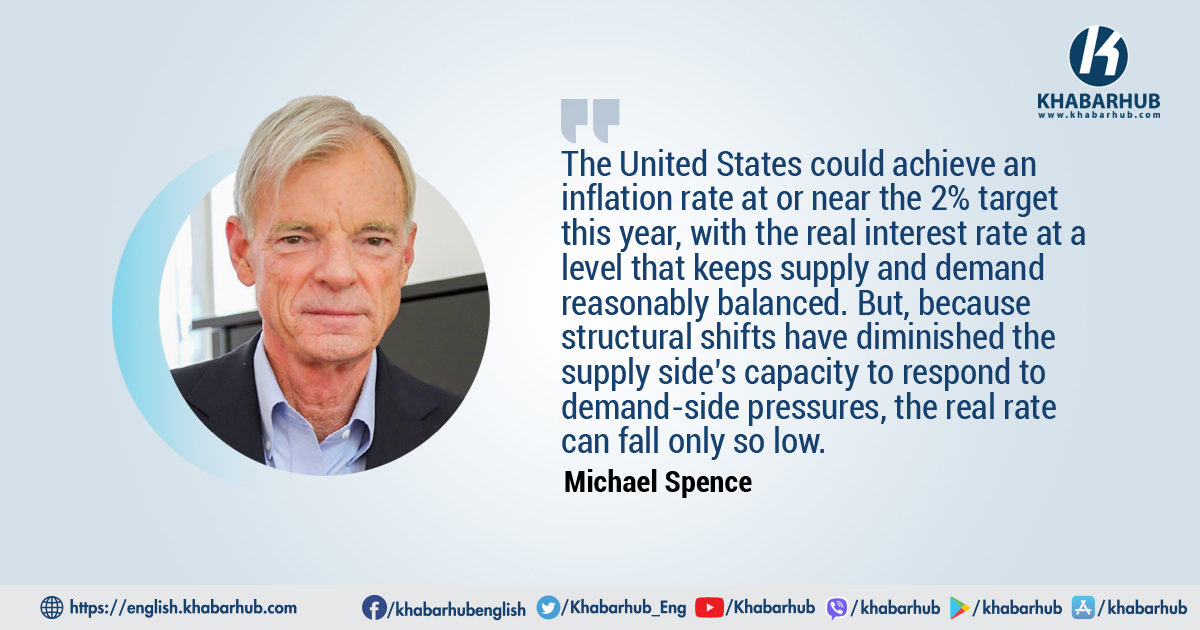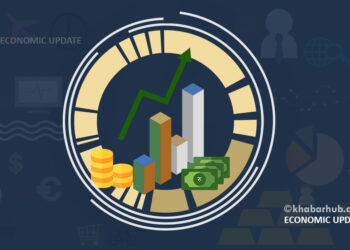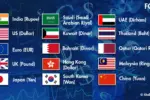What makes a journey? There is the destination, of course; but there is also the route one follows to get there, and the time it takes to complete it.
This might be a useful framework for thinking about the future trajectory of inflation and interest rates – a journey with important implications for the cost of capital, valuations and multiples, debt sustainability, and more.
The first step is to understand how we got to where we are today. After pandemic-era restrictions were lifted, demand surged across the global economy, sustained partly by healthy household and corporate balance sheets, which reflected the generous fiscal support governments had delivered during the pandemic.
But fiscal expansion also caused sovereign-debt levels to rise sharply – a development that will have consequences down the road.
When post-pandemic demand surged, the supply side could not keep up, so inflationary pressure intensified. Some of the supply-side disruptions – the so-called transitory blockages – were a legacy of pandemic-induced closures and imbalances, and quickly eased.
But others proved to be deeper, secular, and structural, and excess demand remained stubbornly persistent.
Eventually, major central banks intervened, rapidly hiking interest rates to constrain aggregate demand. And their efforts seem to have worked: inflation rates have started to come down.
Interest-rate expectations – both nominal and real – beyond 2024 seem more problematic. The dot plot anticipates significant further rate cuts in 2025 and 2026.
What will happen next? Asset-management experts – something I am not – tell me that, paradoxically, the precise path of transitions tends to be more difficult to predict than the destination.
This is an example of a general feature of economic analysis: the equilibria at which markets land can often be characterized more precisely than the transitions between them.
So, let’s look at our destination. Inflation would be at or near the 2% target to which central banks have committed, and which markets expect, and the real interest rate is at a level that keeps supply and demand reasonably balanced (thereby eliminating the root cause of inflationary pressure).
Based on recent inflation trends, this equilibrium appears entirely achievable without a sharp or even mild economic contraction. The question is what that real interest rate will be.
Inflation in the United States currently is 3.4%, and the US Federal Reserve’s policy rate is 5.25-5.5%. That puts the real interest rate at about 2%. So far, this level does not seem to have had any significant negative effect on either GDP growth or employment.
But without a surge in either labor supply or productivity, supply would probably lag and inflationary pressure would re-emerge, driving the real interest rate even lower.
Although the Fed decided at its first meeting of 2024 to keep its benchmark interest rate unchanged, markets have been pricing in a return to the 2% inflation target by the end of the year.
If the Fed lowers the discount rate by 1.5% this year, to the 4% range, the real interest rate would hold at about 2%.
This path for interest rates – six 25-basis-point reductions in 2024 – is consistent with market expectations, and somewhat more aggressive than the Fed’s own projections, according to its latest dot plot.1
Interest-rate expectations – both nominal and real – beyond 2024 seem more problematic. The dot plot anticipates significant further rate cuts in 2025 and 2026.
If the forecasts bear out, the real interest rate would decline and settle at (or close to) 0.5%.
This seems very unlikely, given persistent structural supply-side constraints (including labor shortages, population aging, and declining productivity) and rising costs driven by geopolitical tensions, shocks, and rapid and expensive diversification of global supply networks.
In this scenario, asset prices would become elevated, just as they were in the decade after the 2008 global financial crisis, and credit would expand, driving up demand.
With structural shifts having diminished the supply side’s capacity to respond to demand-side pressures, higher real interest rates will be needed to keep demand – and, thus, inflationary forces – in check. If real rates drop below 0.75%, our path will probably lead right back to high inflation.
But without a surge in either labor supply or productivity, supply would probably lag and inflationary pressure would re-emerge, driving the real interest rate even lower.
To be sure, a productivity surge is possible, especially given breakthroughs in generative artificial intelligence. But when?
Even those of us who anticipate an AI-driven increase in productivity growth do not expect it to happen quickly; it appears far more likely in the latter part of the decade than in the next 2-3 years.
But that could change. If the AI-driven productivity boost does arrive quickly, it would dramatically increase the elasticity of the supply side of the economy.
This would have a deflationary impact, much as emerging-economy growth – which added massive productive capacity to the global economy – did in the last 3-4 decades.
At this point, however, our journey appears very unlikely to involve a return to the pre-pandemic pattern of low nominal and real interest rates, together with inflation at or below the 2% target.
Demand was suppressed for years after the global financial crisis, owing to a prolonged period of balance-sheet repair, especially in the household sector.
But fiscal support during the pandemic prevented similar damage, so demand can easily be unleashed today.
With structural shifts having diminished the supply side’s capacity to respond to demand-side pressures, higher real interest rates will be needed to keep demand – and, thus, inflationary forces – in check. If real rates drop below 0.75%, our path will probably lead right back to high inflation.
(Michael Spence, a Nobel laureate in economics, is Professor of Economics Emeritus and a former dean of the Graduate School of Business at Stanford University)
Copyright: Project Syndicate









Comment